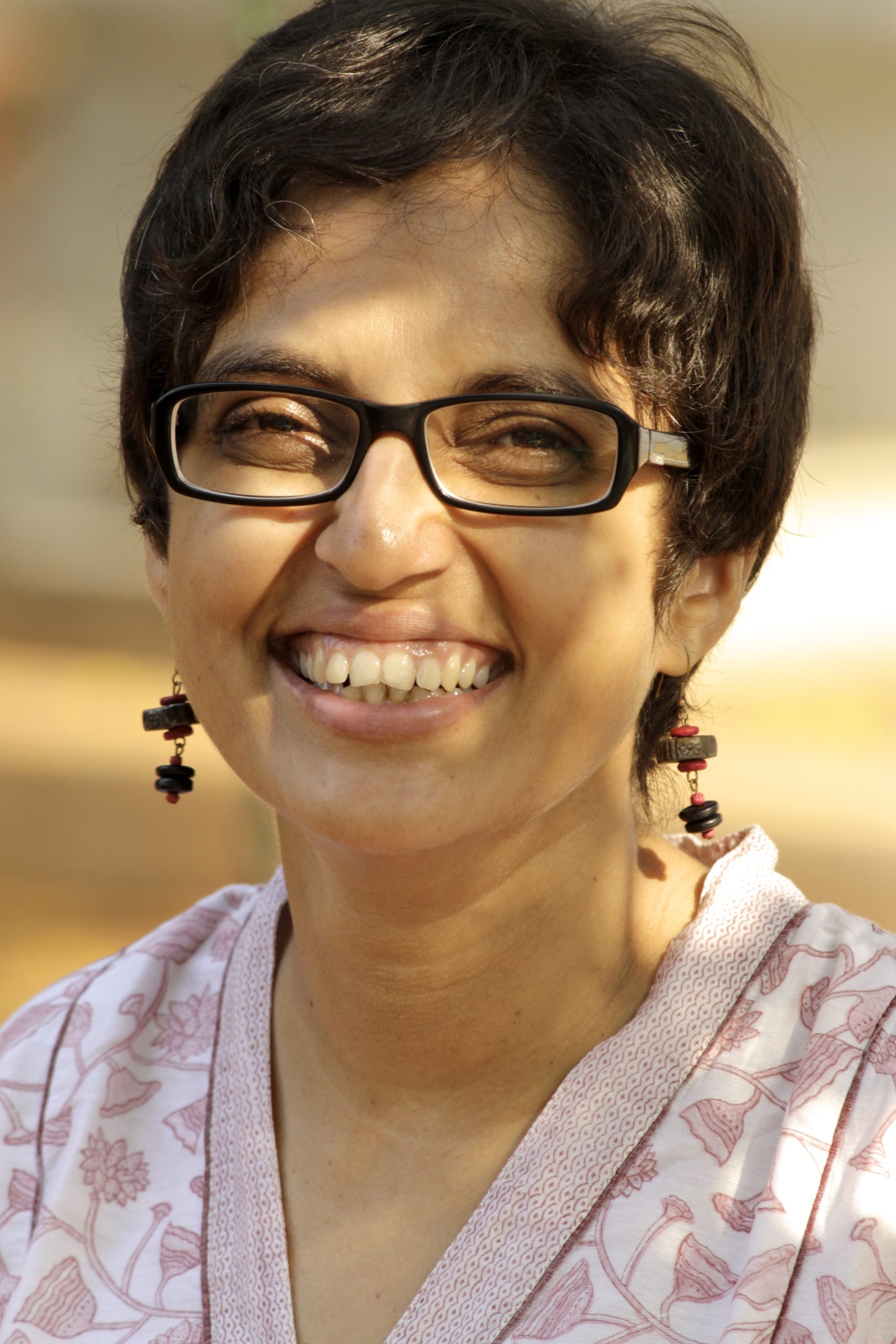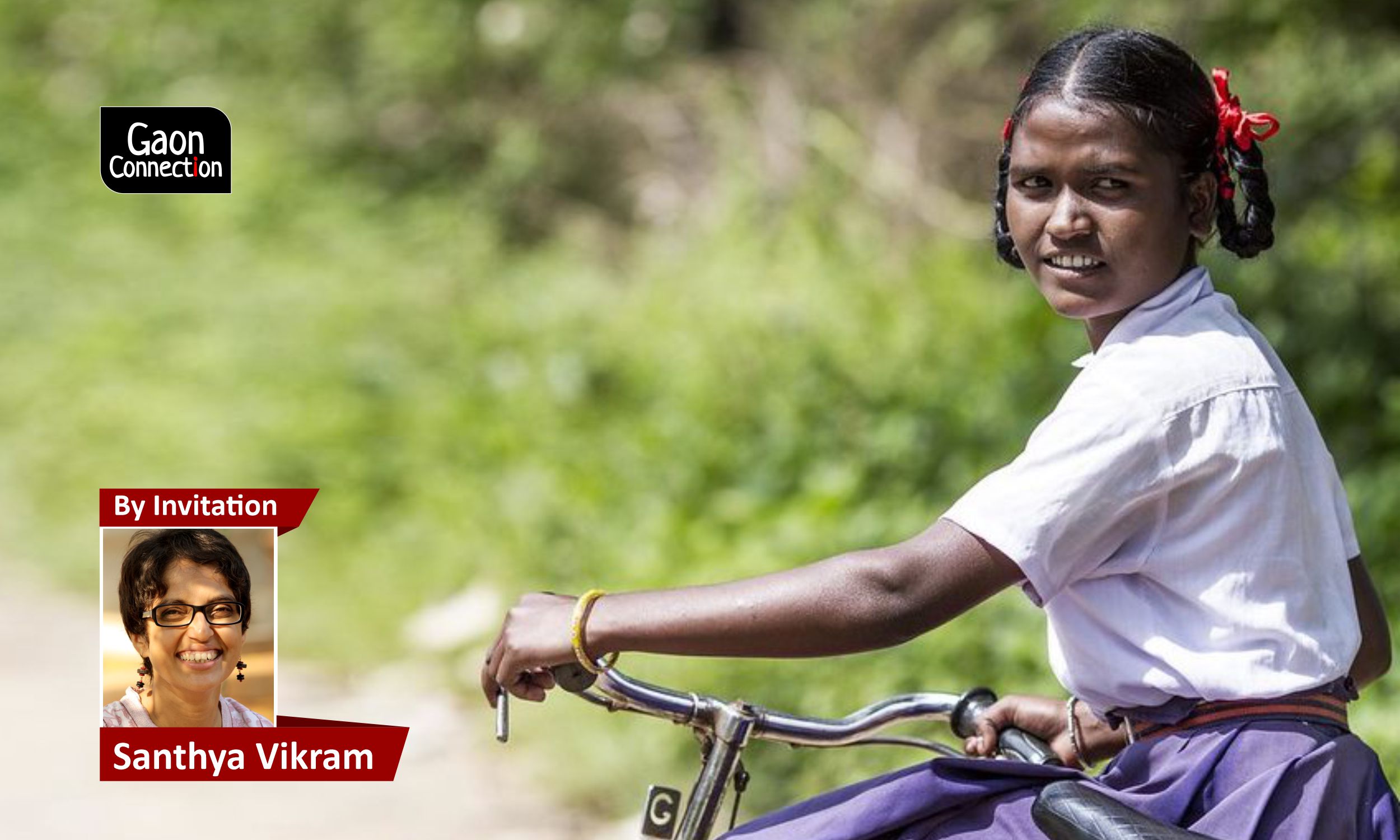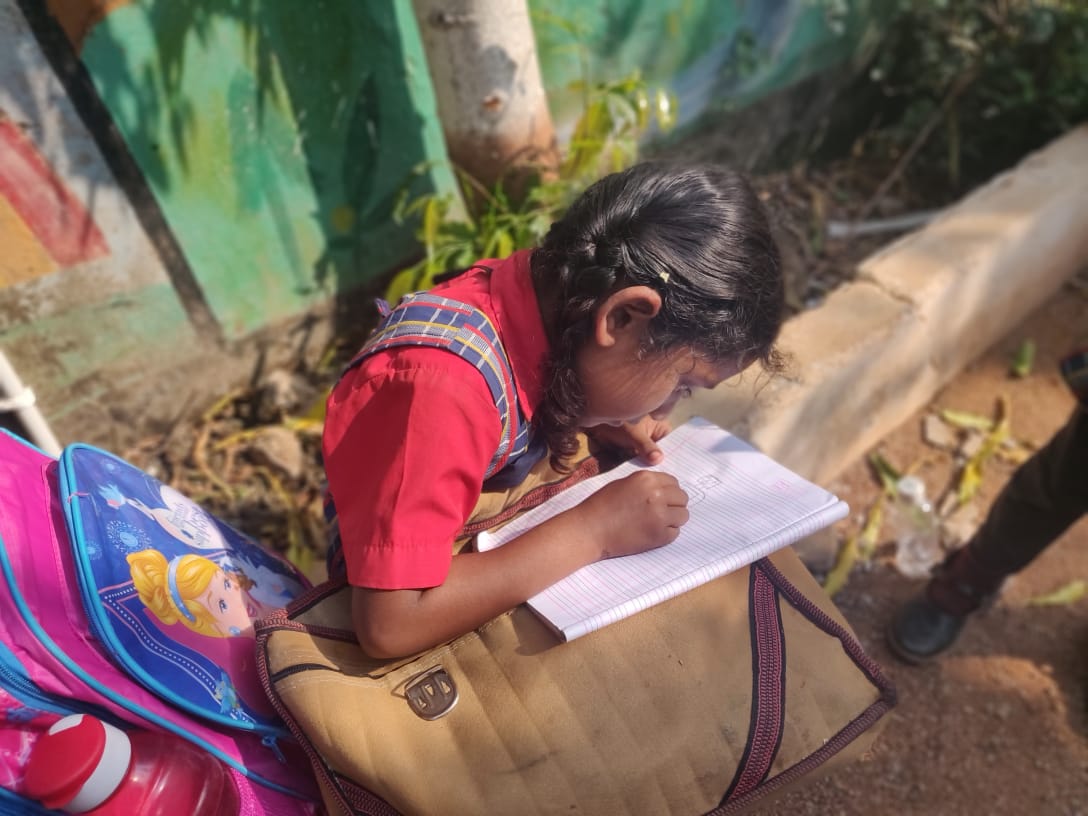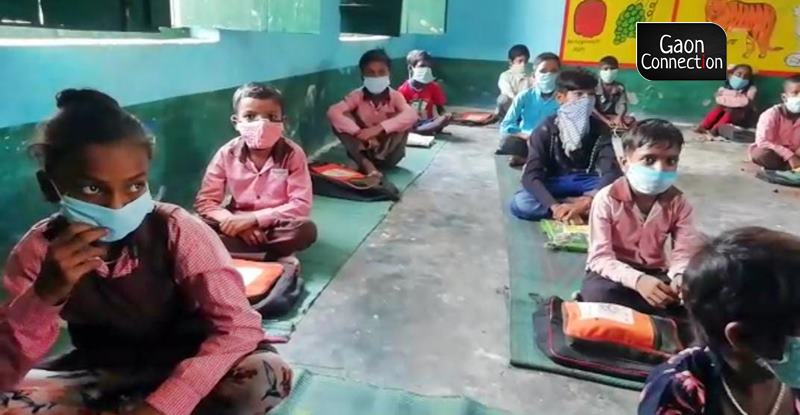With schools reopening, a safe and healthy transition is needed especially for children from poor and marginalised communities
The loss of learning and the harmful effects of the pandemic have not been borne equally by children. In face of the gradual reopening of schools, authorities should consider a differentiated approach between government schools and private ones.


For India’s most vulnerable children the learning crisis is much smaller in magnitude compared to the living crisis. Photo: Unicef India
From economy and religious pursuits to entertainment and political events, there is no field that has been left untouched by the pandemic. Gradually, everything and everyone is attempting to limp back to a normal existence, except for one – our schools.
India is one of the countries with the longest school closures in the world. About 440 million children in India have been out of schools for 18 months now and it is quite likely they will remain out of the educational institutes for another half a year or more.
Is this because we care the most for our children? Or is it because we place them at the bottom of the hierarchy.
“There can be no keener revelation of a society’s soul than the way in which it treats its children,” said Nelson Mandela. And we can see how the damage society has caused to children, even while trying to protect them, is irreversible. We must act with urgency to reclaim and restore the well-being of the children, the future citizens and the most valuable members of this planet.

Online education has been viewed as a viable, meaningful and even progressive alternative to school life and this has dramatically reduced the urgency to bring back children into their classrooms.
I would imagine that what we see in our children today as a result of online education obesity, migraines, learning disabilities, cyber-crimes, inappropriate exposure – are just the tip of the iceberg. The real picture will emerge perhaps 40 years later, of the long lasting and irreversible damages it has caused our children.
While this is the crisis facing millions of children learning online, there is an even larger and more heartbreaking crisis for India’s most vulnerable children, those from the economically weaker sections.
Also Read: In the absence of mid-day meals, children in Bihar survive on roti-onion, bhaat-achar
A UNICEF report states: “While children are not the face of this pandemic, its broader impacts on children risk being catastrophic and amongst the most lasting consequences for societies as a whole.” Henrietta Fore, executive director, UNICEF, had said that “The signs that children will bear the scars of the pandemic for years to come are unmistakable.”
The pandemic threatens to reverse decades of progress. Confinement measures have exposed children to heightened tensions in the household, economic uncertainty and social isolation leaving them vulnerable to violence, exploitation and abuse.
For India’s most vulnerable children the learning crisis is much smaller in magnitude compared to the living crisis.
In effect we will have a generation of children who may be damaged psychologically, intellectually, economically and morally if we do not place them at the heart of our discourse and our society, now, as we reel back to life as, with all the uncertainties still in attendance.

The pandemic of fear
Children who are loved at home come to school to learn. Those who aren’t loved at home, come to school to be loved. Schools serve as sanctuaries for those children who deal with loneliness, grief, loss and anxiety in their homes.
Many families have had to deal with their own losses and, despite their best intentions to focus on the children, have not managed to do so. For children, without the stabilising and anchoring forces of family and friendships, the pandemic has resulted in experiences of trauma.
Also Read: Reaching out to the last child in the learning curve in the pandemic
While there is a lot of focus on mental health today, its reaches are limited to adults and perhaps adolescents. Very little research, focus or effort is made towards mental health in young children. Besides, younger children often do not have the vocabulary to express their inner feelings leading them to feel alone in their suffering.
We also understand from developmental psychology that children absorb the feelings in the environment they live in. Fear, grief and loss that has lived in families and the society as a whole is likely to play a formative role in their inner life and efforts must be made to recognise it.
Transitioning to school – A mammoth task
Transitioning children from no school or online school to real school is going to be a tall order for children, for parents, for teachers, for health systems and for the nation.
There is tremendous focus on disease control – the masks, the vaccines, the SOPs, etc., – the externals. This is very important and is central to our safe transition. In fact, it is the very nerve on which our transition rests. But beneath it, there are some voices on learning gaps and possible approaches that are to do with an equally important aspect to this transition that has not been considered – the internal.
Also Read: What is the cost of childhood wasting and severe acute malnutrition in India?
Are we going to work with our curriculum and try and make up for the lost time, or are we going to look at education with the new perspective it deserves?
Children who have endured the pandemic have endured loss, loneliness, the virus itself, isolation and many other existential aspects of life and living. When we bring the children back to school, our primary focus needs to be on the health of the child. Experts believe that the reactions from some of the children bear a close resemblance to ‘post traumatic stress disorder’.
Therefore, trauma-informed education and trauma-informed teaching must become a guidance force in education.
The government of New Zealand recruited hundreds of artists in education post the pandemic even when their impact was very different compared to our loss as a nation. Transitioning therefore needs to look at the externals and the internals – a safe ecosystem, the learning needs and the psychological/ emotional needs of our children.
Also Read: Severely malnourished under-5 children consumed by hunger in the pandemic

The order of transition
Every time the government has made an effort to bring back children, even for a short while, the focus has been on high school. Is it because we have evidence that the immunity of adolescents is greater than the younger children? Or is it because we prioritise their examinations?
In a recommendation made by ICMR (Indian Council of Medical Research), it has been stated that primary schools be opened first. Many countries including the UK never closed their kindergartens even at the peak of the pandemic. Should our order therefore be high school downward or primary upward?
Also Read: The Village School: Where local should be vocal
A differentiated approach
The harmful effects of this pandemic will not be distributed equally. The loss of learning has not been borne equally. Therefore the treatment to re-open schools should not be treated equally. While considering transitioning of children, governments should consider a differentiated approach between government schools and private schools.
Children who have had no access to education and have had to endure tremendous risks need to be prioritised in terms of focus. Physical and emotional health, therapeutic interventions and bridging the learning gap should become a concerted effort in government schools while private institutions should be given broad governing structures for school opening, safety and learning that can be monitored.
Teachers for children
Teachers have demonstrated an extraordinary capacity for change in how they have coped with the pandemic and served the needs of their children to their best abilities. Many teachers feel their hands have been tied and are willing to walk the extra mile for the children.
Teachers and their work need to be focussed on and invested in, if our transition has to be meaningful and in the real service of our children.

Voices of parents
Parents are important stakeholders in the decision to bring children back to schools, and they are divided in their opinions. In the first year of the pandemic and school closure, most parents were keen on not sending their children to school as many polls have indicated.
However, this year, a lot of parents are seeing the impact on children and are more willing and prepared to send their children to school even before vaccination is possible. Parents need awareness on the ill effects of school closures and the impact on their children’s well-being to be able to support the governments in their decision to bring back the children.
Allies for children
Political leaders, paediatricians, mental health workers, policy makers and educators, all of us engaged with children need to come together for their sake – with conviction and clarity on our next steps.
Our society needs to place the loss of our children at the heart of our losses and recognise that every child deserves to come out into the open world from the unceasing lockdown that has been imposed on them for the last 18 months leaving them as the most displaced and marginalised community in the world.
Santhya Vikram is an educator and activist for children and is the founder of Yellow Train, a progressive school in Coimbatore, Tamil Nadu.

